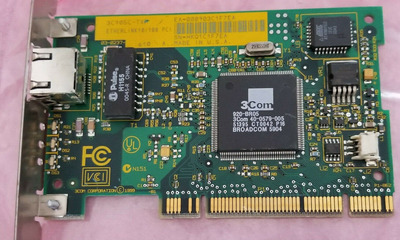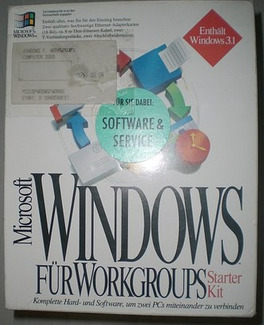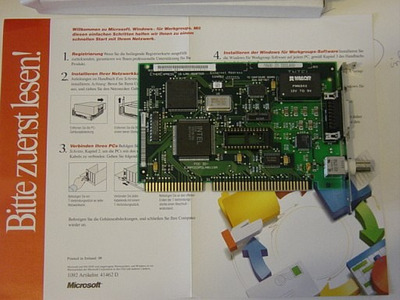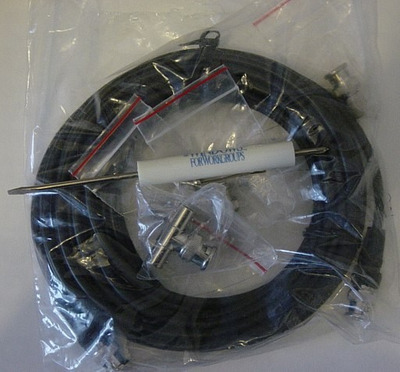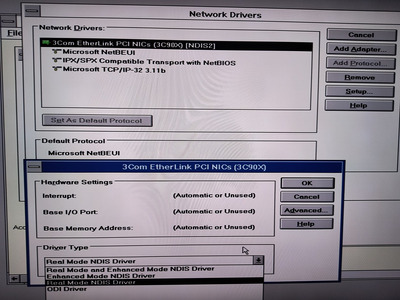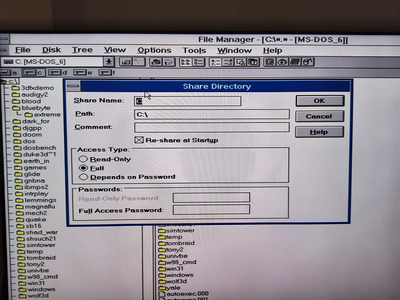spacesaver wrote on 2023-10-16, 00:52:
Jo22, I see you're a proponent of WFW. Win 3.1x doesn't seem very popular on Vogons. The 1st PC I used had Win 3.1. Later, before middle school, my family got a newer PC with Windows 98, but I continued using 3.1 for a few more years. The only networking on 3.1 I remember was using America Online. It sounded like you said only WFW got TCP/IP backported from Win95, so I wonder what protocol America Online or other dial up ISPs used. I'm surprised even IE 5 can run on Win3.1 ! I'm going to try it.
Hi there! 🙂 I was using Windows 3.1 way back in the 90s and have fond memories of it.
I mainly browsed shareware CDs back then and visited a few BBSes.
It was fun reading through all the stuff and trying out those little games for the Windows desktop (DOS games, too).
Unfortunately, I was quite young back then and wasn't into the latest hardware.
What I had on my desktop was a humble 286 PC, running at 12 MHz.
However, it was upgraded by my father and me. 4 MB of RAM, VGA, mouse, a handy scanner, HP Laserjet,
a multimedia upgrade kit consisting of a PAS16 soundcard w/ CD-ROM drive, an older Creatix modem..
It was good enough to go online, but it could only run 16-Bit software.
Which means CompuServe's WinCIM ran fine, but not the Internet Explorer 3.
Same goes for AOL software, I suppose, but I don't think we had an subscription for AOL.
- AOL was the arch enemy of CompuServe, so to say. 😁
(Not that it was an issue to us, whatsoever.)
What we also had was T-Online software 1.2, for the national online service (BTX, Datex-J; a Videotex service). Think of it as a variation of the French Minitel service.
The software shipped with a special version of Netscape Navigator 2.1, I believe, but that was 32-Bit, too - like Internet Explorer.
So neither did run on my PC, sadly..
The basic online service of both T-Online and CompuServe (not internet based) worked on my PC just fine, though.
By contrast, my dad was running Windows 95 early on, before the A/B/C revisions were out.
And that's were I got into contact with TCP/IP, originally, if memory serves.
We also had Windows for Workgroups, but the original version which wasn't so well supported..
On the Windows 95 PC, however, both internet browsers were supported and it was possible to join the information superhighway.
Hm. It's weird to say, but in my place the internet didn't have that same status as in other places. 🤷♂️
Many internet things were already possible via ISDN and AX.25 (the service was known as Datex-P here) back in the day.
Like video telephony, e-mail, digital fax, telephone conferencing etc.
Banks and ATMs used Datex-P, too. Home banking / online banking was usually being done via Datex-J (aka BTX, T-Online), which also was accessible over Datex-P network.
The connection was safer than using the internet.
If a user wanted to connect to his bank to transfer money or check the account,
the bank computer was connecting directly to you and take over the communication from Datex-J (BTX, T-Online).
It was an external database, so to say, not a part of the Datex-J (BTX, T-Online) mainframe system.
The digitalization wasn't so focused around TCP/IP yet.
In fact, in my place many PC professionals didn't even know about TCP/IP or the internet back then, it was considered more of an exotic Unix thing.
In the public mind, the internet was something the universities had worked with, an experimental something.
Which it was - but in the 80s..
Edit: I must admit that pure ISPs did also exist, though.
1&1 was an early one in my place, I think. Some users were using young ISPs in favor of the big, established online services.
This was years before Microsoft tried to convince everyone into participating "The Microsoft Network" (Windows 95 had shipped with MS Network software).
But still, it weren't dark times. In my place we had car phones, cellphones (w/ SMS, but as scrolling text) and pagers (Scall, Skyper etc), Videotext/Teletext (like Ceefax in UK) and so on.
It were modern times in the 90s here, with networking and so on.
But the PC networks ran on IPX/SPX (Novell Netware or a compatible system) or other network suites like Kirschbaum Netz (based on Little Big LAN from the US).
Some users/small offices also used null-modem cables and Norton Commander or LapLink/WinLink software.
Networking was very adventurous in the 90s. 🙂
Computer magazines here did of course cover the world wide web, but it was still an exotic thing, rather.
It was being covered alongside BTX and CompuServe forum pages. AOL, too, later on, maybe.
There were collections of interesting URLs being mentioned in magazines.
Of obscure things, music sites, private fan sites, virtual reality etc.
Some magazines also had a list of popular mailboxes (BBSes) printed.
The MausNet was one of the bigger ones, I vaguely remember.
In other places, Fidonet was still a thing. Some BBS ports also had the newest modems installed and/or an ISDN port.
Was a fun time. 😄 I wished I had seen more of it back then.
We also had public BTX terminals everyone could use. It were like internet terminals, but without the internet.
Home users could use Multitels telephones, they looked pretty much like Minitels from France. Or a computer, of course.
TVs sold in the 90s had videotext/teletext decoding built-in. People without a PC or an online subscription could read the latest news comfortable at home any time.
The data signals were being hidden in the analogue TV signals (like with Ceefax).
Some rare TVs also had a keyboard and could establish a dial-up connection to BTX (by using an external modem).
This was a bit confusing, because BTX looked quite like Teletext. Both also had similar naming at some point (Videotex family of online service vs Videotext aka Teletext). 🙁
PS: The early - mid 90s were also a time in which Paket-Radio on CB radio was a thing (in my place, that started ~'94).
For those nerds of us into both PCs and walkie-talkies etc..
It wasn't exactly mainstream, though. But free of charge, at least.
spacesaver wrote on 2023-10-16, 00:52:
I think what would be really cool is if someone ported DirectX to Win 3.1 ! I remember the lack of any graphically demanding games. Some games like SimTower and many educational titles used WinG, but no AAA titles.
I second that! 😃 I hope that a Direct Draw to WinG is possible one day.
Because quite a few 32-Bit applications could in theory run on Win32s (examples).
What's holding a few of them back is the lack of DirectDraw/DirectSound.
DirectX version 2 or 3 would be sufficient to make them run, I believe.
DirectSound isn't so critical, maybe.
Edit: A few graphical sophisticated games that come mind are:
- Myst and other QuickTime titles (Pyst, Robot City etc)
- Titanic: Adventure Out of Time
- Freddy Fish series, Putt-Putts series
- Dare to Dream series (by Epic MegaGames)
- Creatures
- Fury³
- Sierra On-Line games (Kings Quest 7 etc)
- Certain Sega PC titles (Comix Zone?)
- Lion King (Windows port run on Win32s?)
Edit:
giantclam wrote on 2023-10-16, 01:27:
The only networking on 3.1 I remember was using America Online
That would've been trumpet winsock iirc.
I remember, back in the days of Mosaic web browser and Windows 3.1, there were Winsocks on various CD-ROMs.
Some were shareware, I vaguely remember.
Edit: Ah, sorry for the long posting.. It's late in the evening here and I got carried away a bit. 😅
